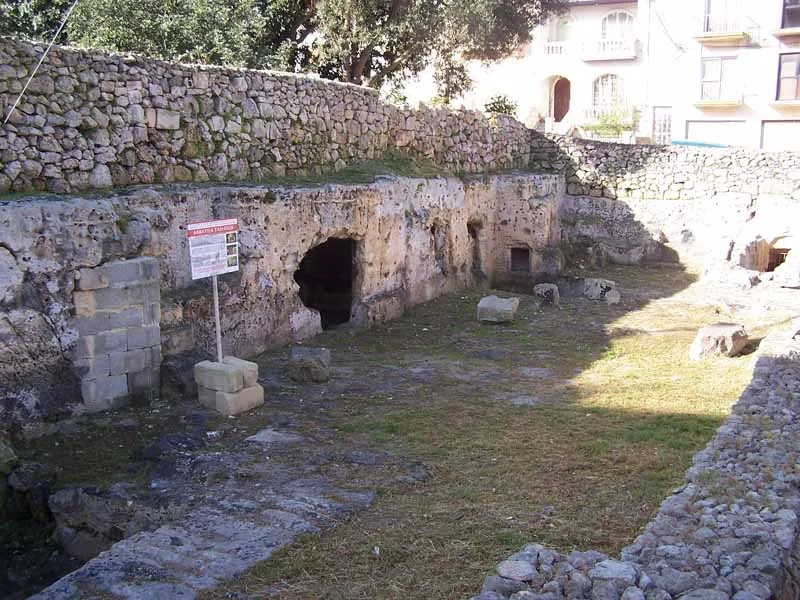The Abbatija Tad-Dejr hypogeal complex, located in Rabat, Malta, represents a significant paleochristian burial site. Despite its relatively modest size compared to the expansive catacombs of Rome, the catacombs in Malta, particularly those in Rabat, hold a crucial position in the study of early Christian burial practices in the region south of Rome.
Get your dose of History via Email
Historical Development
The initial structure of the catacombs at Abbatija Tad-Dejr consisted of simple shaft and chamber tombs, which were carved directly from the vertical faces of an existing quarry. This basic form of burial site was prevalent during the early phases of its use. However, between the 4th and 9th centuries AD, the site saw significant expansions with the addition of four larger complexes.
Among these, the most notable is the largest catacomb, distinguished by its rows of baldacchino tombs. These tombs, characterized by their canopy-like architecture, are considered among the most elaborate and premeditated burial forms within the Maltese catacomb systems. Notably, at least three of these baldacchino tombs are intricately decorated with reliefs, highlighting their importance and possibly the high status of the individuals buried within.
In the subsequent post-Roman period, this largest catacomb underwent further modifications, being enlarged and converted into a small church, indicating a continued and evolving use of the site.
Early Christian Usage and Subsequent Adaptations
The early Christian utilization of the Abbatija Tad-Dejr complex is evidenced by several features within the hypogeum. Notably, the presence of a stone altar and numerous crosses carved into the rock surfaces suggest religious activities and ceremonies were conducted here. Additionally, a fresco that was once located in the apse above what is believed to be the original altar position, now preserved in the National Museum of Fine Arts, further corroborates the religious significance of the site during this period.
Over the centuries, the catacombs experienced various other phases of use that extended beyond religious purposes. At different times, the catacombs served as cow pens and as sites for quarrying stone for lime production. These latter uses, particularly the extraction of stone, inflicted considerable damage to the original structures of the catacombs. Today, visitors can observe some of the truncated shaft and chamber burials from the low roof of the quarry, providing a glimpse into the site’s complex usage history.
Conservation Efforts
Currently, the Abbatija Tad-Dejr is under the management of Heritage Malta but is closed to the public for conservation purposes. The ongoing conservation efforts are crucial for preserving this invaluable archaeological site, ensuring that future generations can study and appreciate its historical and cultural significance.
In conclusion, the Abbatija Tad-Dejr catacombs serve as a vital link to understanding the early Christian burial traditions in Malta and the broader Mediterranean region. Despite the challenges posed by its varied uses over the centuries, the site remains a significant scholarly resource and a testament to the rich historical tapestry of Malta.
Sources:

